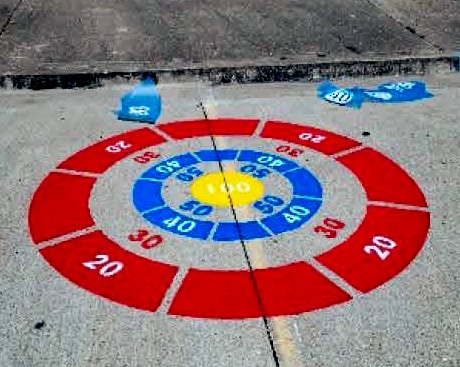At a glance
- Recess encourages students to be physically active with their peers.
- Recess benefits a student's mental, emotional, and physical well-being.
- National guidance offers strategies and resources to improve recess.

Overview
Recess is a regularly scheduled period in the school day for physical activity and play, monitored by trained staff or volunteers. During recess, students are encouraged to be physically active and engaged with their peers in activities of their choice. This applies to all grade levels, K–12.
Recess benefits students by:
- Increasing their level of physical activity.
- Improving their memory, attention, and concentration.
- Helping them stay on-task in the classroom.
- Reducing disruptive behavior in the classroom.
- Improving their social and emotional development (for instance, learning how to share and negotiate).
Facts
The data brief Keep Recess in Schools defines recess and provides a snapshot of current recess practices in the United States. The brief also highlights ways to improve recess through national guidance, strategies, and resources. The data brief was developed by Springboard to Active Schools in collaboration with CDC.
What CDC is doing
Recess strategies
CDC and SHAPE America developed the following documents:
- Strategies for Recess in Schools—Evidence-based strategies for planning and providing recess in schools. The goal is to increase physical activity participation and improve academic achievement (performance, behavior, attention).
- Recess Planning in Schools: A Guide to Putting Strategies for Recess into Practice—Helps schools put the Strategies for Recess in Schools into practice by developing a written school recess plan.
- Recess Planning Template—Provides a customizable template for schools to use when developing their school recess plan.
- Physical Activity During School: Providing Recess to All Students—Explains the benefit and importance of recess, and offers CDC and SHAPE America's new resources for recess.
- Resources for Recess in Schools Promotion Kit—Promotes recess-related resources to your partners and constituents.
Painted play spaces
Enhancing recess environments
During the 2020–2021 school year, four local education agencies (LEAs) and one pilot school in Oklahoma implemented Painted Play Spaces on their campuses, reaching a total of 2,469 students. These efforts can enhance the play environments at schools by using colorful paint and stencils to create recess games.

Resources
- CDC | Ideas for Parents: Recess
- CDC and SHAPE America | Strategies for Recess in Schools
- CDC and SHAPE America | Recess Planning in Schools: A Guide to Putting Strategies for Recess into Practice
- CDC and SHAPE America | Recess Planning Template
- Oklahoma Education | Painted Play Spaces Assessment and Planning Toolkit
- Peaceful Playgrounds | 64 Alternatives to Withholding Recess
- Playworks | Game Guide
- Playworks | Recess Lab
- SHAPE America | Guide for Recess Policy (2016)
- Institute of Medicine. Educating the Student Body: Taking Physical Activity and Physical Education to School. National Academies Press; 2013. Accessed September 25, 2024. http://books.nap.edu/openbook.php?record_id=18314&page=R1
- SHAPE America. Guide for Recess Policy. 2016. Accessed September 25, 2024. https://www.shapeamerica.org/Common/Uploaded%20files/document_manager/advocacy/Guide-for-Recess-Policy.pdf
- Centers for Disease Control and Prevention. The Association Between School-Based Physical Activity, Including Physical Education, and Academic Performance. U.S. Dept of Health and Human Services; 2010. Accessed September 25, 2024. https://www.cdc.gov/healthyschools/pecat/pa-pe_paper.pdf
- Michael SL, Merlo C, Basch CE, Wentzel KR, Wechsler H. Critical connections: health and academics. J School Health. 2015;85(11):740–758.
- Fortson J, James-Burdumy S, Bleeker M, et al. Impact and Implementation Findings from an Experimental Evaluation of Playworks: Effects on School Climate, Academic Learning, Student Social Skills and Behavior. Mathematica Policy Research; 2013.
